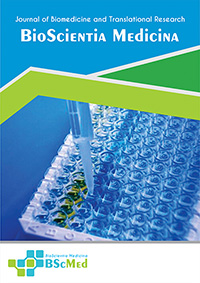Main Article Content
Abstract
Background: Severe, travel-associated fungal keratitis represents a formidable diagnostic and therapeutic challenge, often progressing to corneal perforation despite aggressive medical therapy. Therapeutic keratoplasty (TK) is frequently required to preserve globe integrity. However, its efficacy in this specific, epidemiologically distinct cohort of patients remains poorly quantified. This meta-analysis aimed to synthesize the available evidence on globe salvage and visual acuity outcomes following TK for severe fungal keratitis acquired during international travel.
Methods: A systematic search was conducted in PubMed, Scopus, and Web of Science for studies published between January 2015 and December 2024, reporting outcomes of TK for travel-associated fungal keratitis. The primary outcome was the proportion of cases achieving globe salvage, defined as the avoidance of enucleation or evisceration. The secondary outcome was the mean improvement in Best-Corrected Visual Acuity (BCVA) measured in LogMAR units. Data were pooled using a random-effects model. Heterogeneity was assessed using the I² statistic.
Results: Seven retrospective case series met the inclusion criteria, comprising a total of 102 eyes. The included studies were geographically diverse, with patient travel histories predominantly linked to tropical and subtropical regions in Southeast Asia and South America. The pooled proportion for globe salvage was 89.2% (95% Confidence Interval [CI]: 82.5% to 94.1%). There was low to moderate heterogeneity among the studies for this outcome (I² = 31%, p=0.19). The pooled mean improvement in BCVA from pre-operative assessment to final follow-up was 1.21 LogMAR (95% CI: 0.98 to 1.44). Substantial heterogeneity was observed for the visual acuity outcome (I² = 78%, p<0.001). The most commonly identified fungal genera were Fusarium and Aspergillus.
Conclusion: Therapeutic keratoplasty demonstrates a high rate of anatomical success, effectively salvaging the globe in the vast majority of patients with severe, travel-associated fungal keratitis. While visual acuity is significantly improved, the final outcomes remain guarded and are highly variable. These findings underscore the critical role of TK in the management of this sight-threatening condition and highlight the need for strategies to improve post-operative visual prognosis.
Keywords
Article Details
As our aim is to disseminate original research article, hence the publishing right is a necessary one. The publishing right is needed in order to reach the agreement between the author and publisher. As the journal is fully open access, the authors will sign an exclusive license agreement.
The authors have the right to:
- Share their article in the same ways permitted to third parties under the relevant user license.
- Retain copyright, patent, trademark and other intellectual property rights including research data.
- Proper attribution and credit for the published work.
For the open access article, the publisher is granted to the following right.
- The non-exclusive right to publish the article and grant right to others.
- For the published article, the publisher applied for the Creative Commons Attribution-NonCommercial-ShareAlike 4.0 International License.





